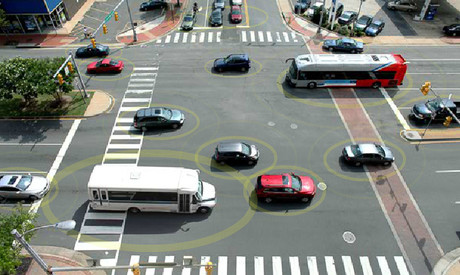Mobile technology to boost pedestrian safety

Australian tech firm Cohda Wireless has trialled its vehicle-to-pedestrian (V2P) technology on city streets for the first time.
The technology was originally designed to allow cars and motorcycles to avoid collisions by talking to each other.
In collaboration with Telstra and the South Australian government, Cohda Wireless has conducted the first test of V2P technology over a mobile network in South Australia’s capital, Adelaide.
The system uses mobile technology to provide an early-collision warning to a driver and also alerts a pedestrian or cyclist via a smartphone application.
This innovation could become available in the 16 million smartphones in use in Australia and could potentially be extended to the two billion smartphones worldwide.
Cohda Wireless CEO Paul Gray said the trials highlighted the impact of vehicle-to-everything communications on community safety.
“Giving vehicles 360° situational awareness and sharing real-time driving information is the only way we can create safer roads for the future,” he said.
“Cohda’s ongoing partnership with Telstra also demonstrates Cohda’s ability to deliver Cellular V2X (C-V2X) solutions, an important part of the complete V2X system.”
The technology makes use of available 4G networks to allow riders, drivers and pedestrians who are further away to reliably receive necessary information.
Before a driver turns a blind corner, the system will notify them of any pedestrian or cyclist crossing the adjacent street.
It was tested using other common scenarios, such as a car and a cyclist approaching a blind corner, a car reversing out of a driveway and a car approaching a pedestrian crossing.
The trial was funded in part by the South Australian government’s $10 million Future Mobility Lab Fund to boost local testing, research and development of connected and autonomous vehicle technologies.
Cohda commands about 60% of the global vehicle-to-vehicle communication market.
It previously developed a ‘digital protective shield’ system, which transmitted information such as vehicle types, speed, position and direction of travel between cars and motorcycles at a rate of up to 10 times per second to ensure a high level of accuracy.
This service could be transmitted to any device within a several hundred-metre radius.
Telstra Chief Technology Officer Håkan Eriksson said the technology would make Australian roads safer, more efficient and better prepared for the future of autonomous vehicles.
“The most important outcome of V2X technology is the increased safety for road users, as the impact of human error can be minimised by helping vehicles communicate with each other and react to their surroundings,” he said.
“This is the first time V2P technology has been trialled in Australia on a 4G network and is an important step on the journey to fully autonomous vehicles on Australian roads.”
Originally published here.
Rock lobster processor and exporter finds driver safety partner
A transport technology solutions provider has announced a new contract to enhance safety with...
Level crossing AI safety solution has merit
Among the merit recipients in the 2025 VIC iAwards was an edge AI solution designed to enhance...
Laser bird deterrent boosts tram depot safety
A Melbourne tram depot has reduced bird roosting by 90%, boosting safety through a fully...








